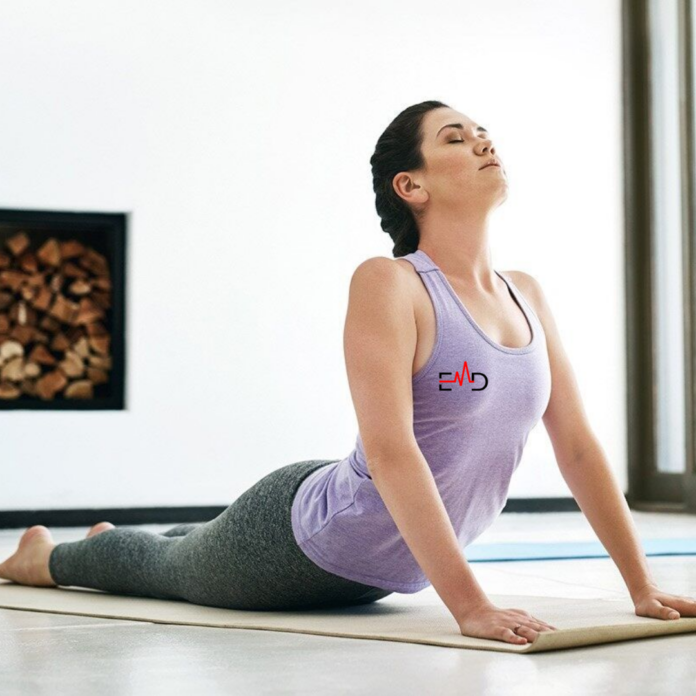Table of Contents
Exercise Daily – Back pain can be a persistent and debilitating issue for many people, impacting their daily lives and overall well-being. Fortunately, yoga offers a natural and holistic approach to alleviating back pain. In this guide, we’ll delve into yoga and explore the best yoga poses to help relieve back pain effectively.
What is Back Pain, and Why Yoga?
Back pain is a common ailment that can result from various factors, including muscle strain, poor posture, injury, or underlying medical conditions. The discomfort and limited mobility it brings can be overwhelming. While several methods exist to address back pain, yoga is an effective and gentle solution. It not only relieves pain but also enhances overall physical and mental health.
Back Pain
1. Causes of Back Pain
To effectively manage back pain, it’s crucial to understand its root causes. From muscle imbalances to herniated discs, numerous factors contribute to back pain. Identifying the underlying cause is the first step toward effective treatment.
2. Importance of Seeking Medical Advice
Consulting a healthcare professional is essential before diving into yoga for back pain relief. They can diagnose properly and ensure that yoga is a safe and suitable for your specific condition.
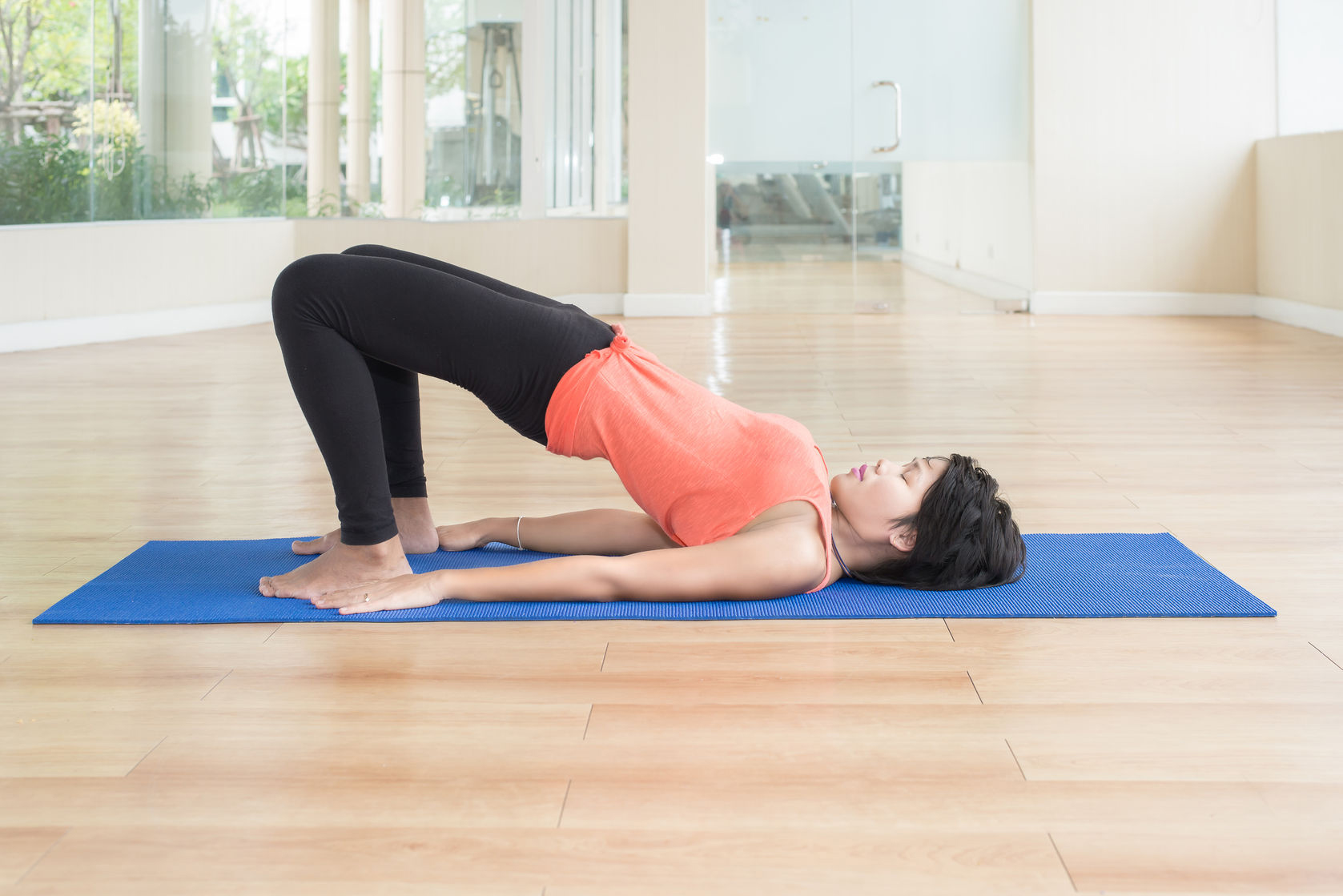
How Yoga Can Help
1. Yoga’s Holistic Approach to Wellness
Yoga is more than just physical postures; it encompasses a holistic approach to well-being. It focuses on the mind-body connection, breathing techniques, and meditation, which can significantly reduce stress—a common exacerbating factor for back pain.
Yoga is not merely a series of physical exercises; it’s a holistic approach to wellness that encompasses the mind, body, and spirit. Here’s how this holistic approach can help combat back pain:
- Stress Reduction: High stress levels can exacerbate back pain. Yoga incorporates relaxation techniques and mindfulness practices that reduce stress and promote a sense of calm. Lower stress levels can lead to decreased muscle tension, often contributing to back pain.
- Improved Posture: Many yoga poses focus on alignment and body awareness. By consistently practicing yoga, you become more mindful of your posture throughout the day. This heightened awareness can help you maintain better spinal alignment and reduce the risk of strain.
- Enhanced Flexibility: Yoga is renowned for improving flexibility. Greater flexibility in the muscles and joints of the back can reduce stiffness and discomfort. When your muscles are more supple, they are less prone to spasms and strains.
- Strengthens Core Muscles: A strong core is crucial for supporting the spine. Yoga includes numerous poses that engage the core muscles, helping to stabilize and protect the back.
- Better Circulation: Yoga promotes circulation throughout the body, ensuring that oxygen and nutrients reach the tissues in the back, aiding in healing and pain relief.
2. Yoga for Strengthening Core Muscles
One of the key benefits of yoga is its ability to strengthen core muscles. A strong core provides better support to your spine and reduces the risk of future back pain episodes.
One of the primary reasons yoga is effective for back pain relief is its emphasis on strengthening core muscles. The core includes the abdomen, lower back, and pelvis muscles. These muscles provide essential support to the spine and help maintain proper posture. Here’s how yoga targets core strength:
- Isometric Contractions: Many yoga poses require holding positions that engage your core muscles, leading to isometric contractions. This sustained muscle engagement builds strength over time.
- Balance Poses: Yoga often incorporates balance poses that challenge the core. Poses like Tree Pose and Warrior III require you to stabilize your spine by engaging your core muscles.
- Backbends: Certain yoga poses, such as Cobra Pose and Bridge Pose, involve gentle backbends. These movements strengthen the muscles along the spine, promoting flexibility and relieving tension.
- Twisting Poses: Twisting poses like Seated Spinal Twist and Revolved Triangle Pose engage the oblique muscles, which play a significant role in core stability.
- Breathing Techniques: Yoga places great emphasis on controlled breathing. Deep diaphragmatic breathing engages the core muscles and supports spinal health.
By consistently practicing yoga and focusing on core strength, you can significantly reduce the risk of back pain and experience relief from existing discomfort. Additionally, a strong core contributes to better overall posture and spinal health.
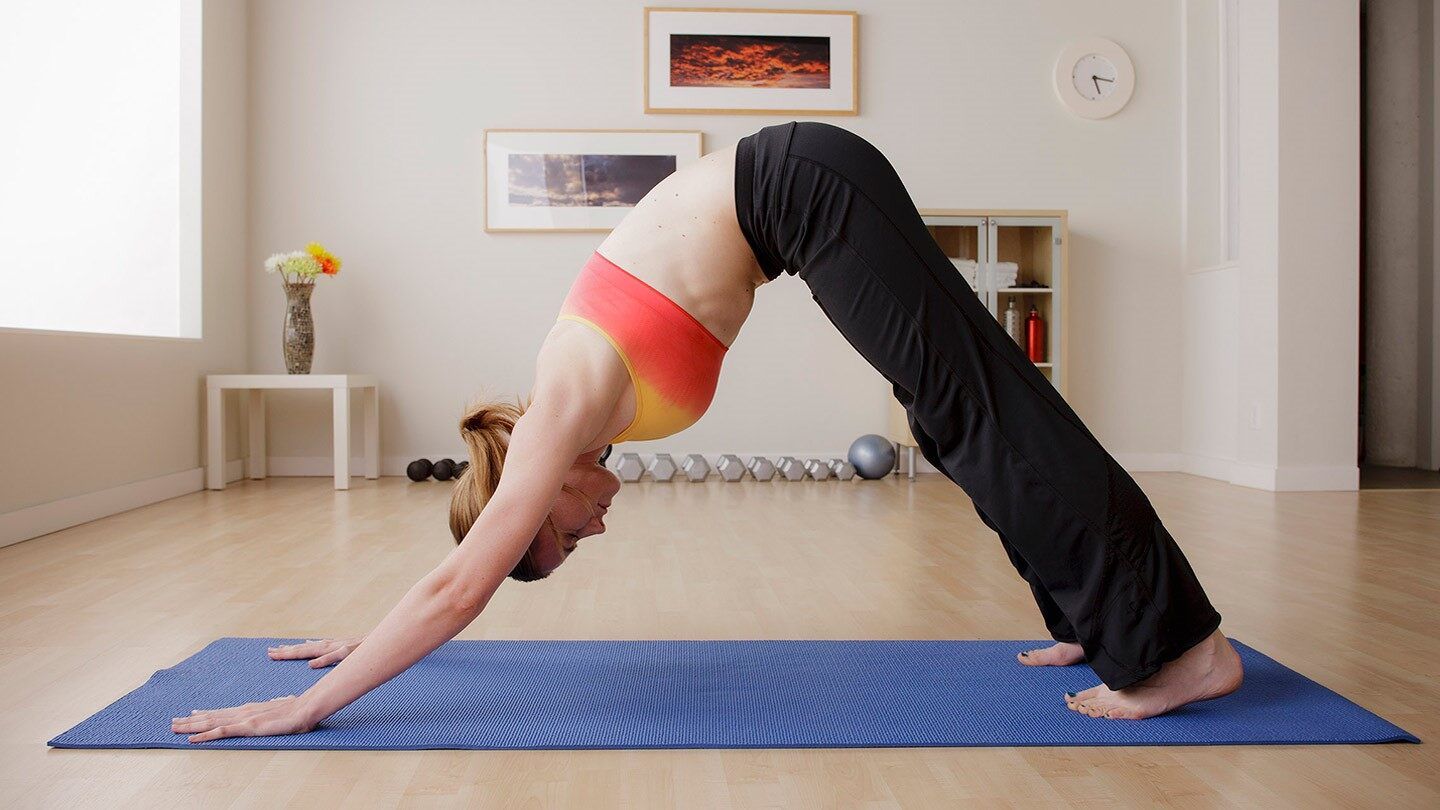
Best Yoga Poses for Back Pain Relief
Specific poses have proven to be exceptionally effective when it comes to easing back pain through yoga. These poses target different areas of the back, promoting flexibility, strength, and relaxation. Let’s explore the best yoga poses to relieve your back pain.
1. Child’s Pose (Balasana)
Child’s Pose is a gentle and restorative yoga pose that stretches the lower back and provides immediate relief from discomfort. To perform this pose:
- Start on your hands and knees in a tabletop position.
- Sit back onto your heels while extending your arms forward, lowering your chest toward the ground.
- Relax your forehead on the mat and breathe deeply, allowing your back to release tension.
2. Cat-Cow Pose (Marjaryasana-Bitilasana)
Cat-Cow Pose is an excellent way to increase flexibility in the spine and relieve tension in the back. It’s a dynamic movement that combines two poses:
- Start in a tabletop position with your wrists under your shoulders and knees under your hips.
- Inhale as you arch your back, lifting your tailbone and head (Cow Pose).
- Exhale as you round your spine, tucking your chin and tailbone (Cat Pose).
- Repeat this gentle flow, syncing your breath with the movements for a few rounds.
3. Downward-Facing Dog (Adho Mukha Svanasana)
Downward-Facing Dog is a staple yoga pose that stretches the entire spine, promoting better alignment and relieving pressure on the lower back. To do this pose:
- Begin in a push-up position.
- Lift your hips upward, forming an inverted V shape with your body.
- Keep your arms and legs straight, spreading your fingers wide for stability.
- Press your heels towards the ground, lengthening your spine, and breathe deeply.
4. Cobra Pose (Bhujangasana)
Cobra Pose is excellent for strengthening the back muscles and can alleviate pain caused by poor posture. Follow these steps:
- Lie on your stomach with your legs extended and the tops of your feet touching the mat.
- Place your palms beside your shoulders.
- Inhale as you lift your chest off the ground, keeping your lower ribs on the floor.
- Press your pubic bone into the mat and engage your back muscles.
- Hold the pose for a few breaths and then release.
5. Bridge Pose (Setu Bandha Sarvangasana)
Bridge Pose engages the glutes and lower back, providing strength and flexibility. Here’s how to do it:
- Lie on your back with your knees bent and feet hip-width apart.
- Place your arms alongside your body, palms facing down.
- Inhale as you lift your hips toward the ceiling, creating a bridge shape with your body.
- Press down through your feet and engage your glutes.
- Hold the pose for a few breaths and then lower your hips slowly.
6. Child’s Pose (Balasana)
Child’s Pose is worth mentioning again for its versatility and effectiveness in back pain relief. It’s an excellent pose to return to if you need a moment of rest during your practice.
7. Triangle Pose (Trikonasana)
Triangle Pose stretches the sides of the body and promotes spinal flexibility. To perform this pose:
- Begin with your feet about three to four feet apart, one foot turned slightly out, the other foot turned 90 degrees.
- Extend your arms parallel to the ground.
- Hinge at your hip, reaching your front hand toward your front foot.
- Keep your back straight and gaze upward.
- Hold the pose, feeling the stretch along your side, and then switch sides.
8. Pigeon Pose (Kapotasana)
Pigeon Pose is ideal for stretching and releasing hip and lower back tension. Follow these steps:
- Start in a tabletop position.
- Slide one knee forward, bringing it to the floor behind your wrist.
- Stretch your other leg out straight behind you.
- Square your hips and fold forward, reaching your arms out.
- Breathe deeply and feel the stretch in your hip and lower back.
9. Locust Pose (Salabhasana)
Locust Pose strengthens the back muscles and improves posture. To perform this pose:
- Lie on your stomach with your arms at your sides and forehead on the mat.
- Inhale as you lift your chest, arms, and legs off the ground.
- Keep your gaze downward and engage your back muscles.
- Hold the pose for a few breaths and then lower down.
10. Happy Baby Pose (Ananda Balasana)
Happy Baby Pose relaxes the lower back and hip muscles, reducing discomfort. Here’s how to do it:
- Lie on your back with your knees bent.
- Lift your legs and hold onto your feet from the inside.
- Gently pull your knees toward the floor, opening your hips.
- Rock gently from side to side to massage your lower back.
Incorporate these yoga poses into your routine to experience relief from back pain and improve the overall health of your spine. Remember to listen to your body, breathe deeply, and practice regularly for the best results.
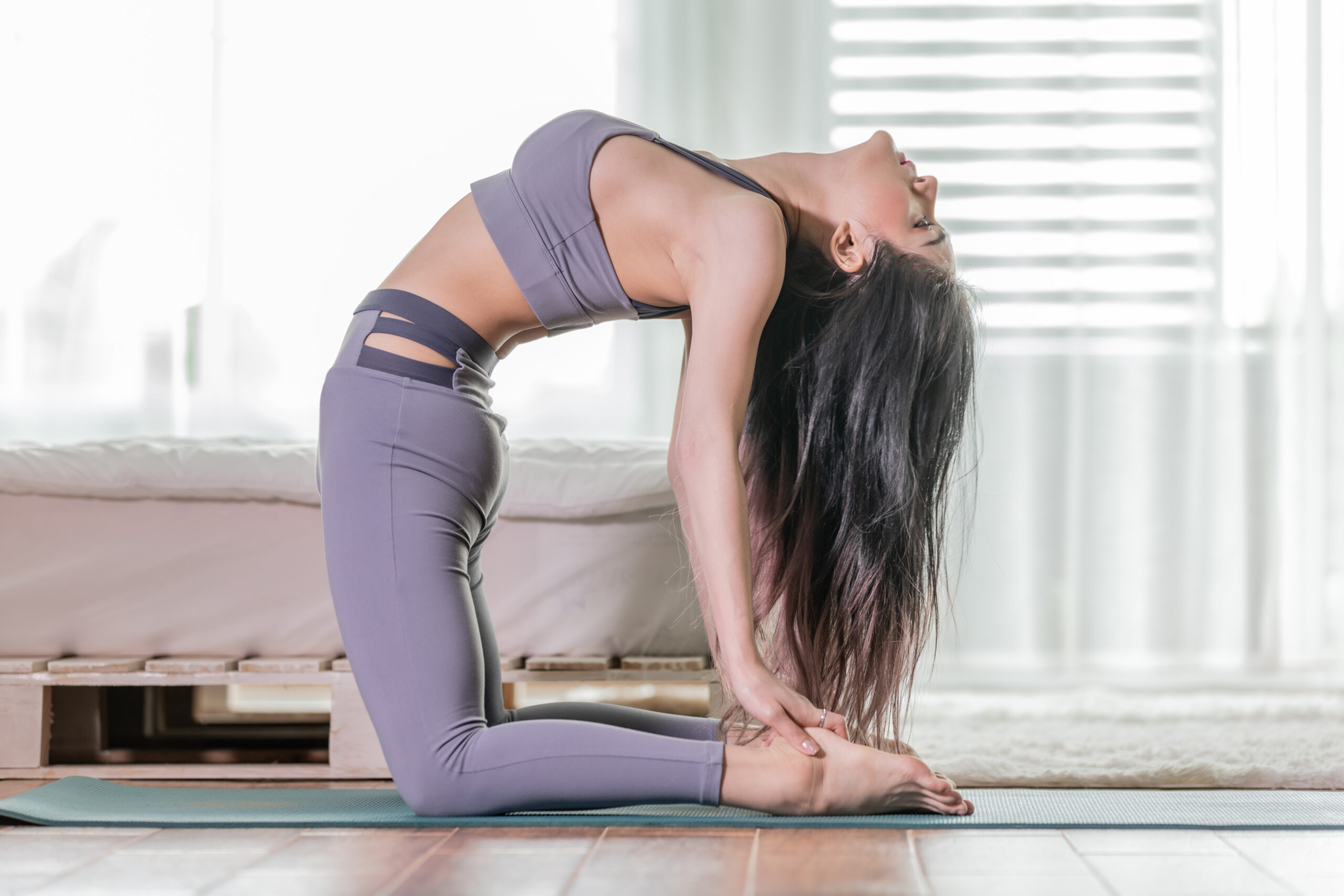
Benefits of Yoga for Athletes
Yoga offers many benefits for athletes of all levels and disciplines. It’s not just about flexibility; it’s a holistic practice that can enhance physical and mental performance. Here are some of the key benefits of yoga for athletes:
1. Improved Flexibility
- Enhanced Range of Motion: Yoga’s stretches and poses work on different muscle groups and joints, helping athletes achieve a greater range of motion. This increased flexibility can improve overall athletic performance and reduce the risk of injury.
- Injury Prevention: By maintaining flexibility, athletes can prevent common sports-related injuries, such as strains, sprains, and muscle pulls. A flexible body is less likely to succumb to the stress of sudden movements.
2. Better Strength and Endurance
- Functional Strength: Many yoga poses require athletes to use their own body weight for resistance, which can build functional strength. This strength is not just about muscle size but also about improved stability and balance.
- Core Strength: Yoga significantly emphasizes core engagement, which is essential for overall stability and power in many sports.
3. Enhanced Balance and Stability
- Balance Training: Yoga often challenges balance and proprioception, which is crucial for athletes in sports like surfing, snowboarding, and gymnastics.
- Stability: Improved stability helps athletes maintain control during movements, reducing the risk of falls or missteps.
4. Stress Reduction and Mental Focus
- Stress Relief: The mindfulness and relaxation aspects of yoga can reduce stress and anxiety, promoting mental well-being. This is particularly beneficial for athletes dealing with performance-related pressure.
- Concentration: Yoga encourages mental focus and concentration. Athletes can apply these skills to stay in the zone during competitions.
5. Better Breathing
- Enhanced Oxygen Intake: Yoga emphasizes controlled, deep breathing, which can improve lung capacity and oxygen uptake. This can be especially beneficial for endurance athletes.
- Improved Recovery: Efficient breathing techniques learned in yoga can aid in post-workout recovery by reducing muscle tension and promoting relaxation.
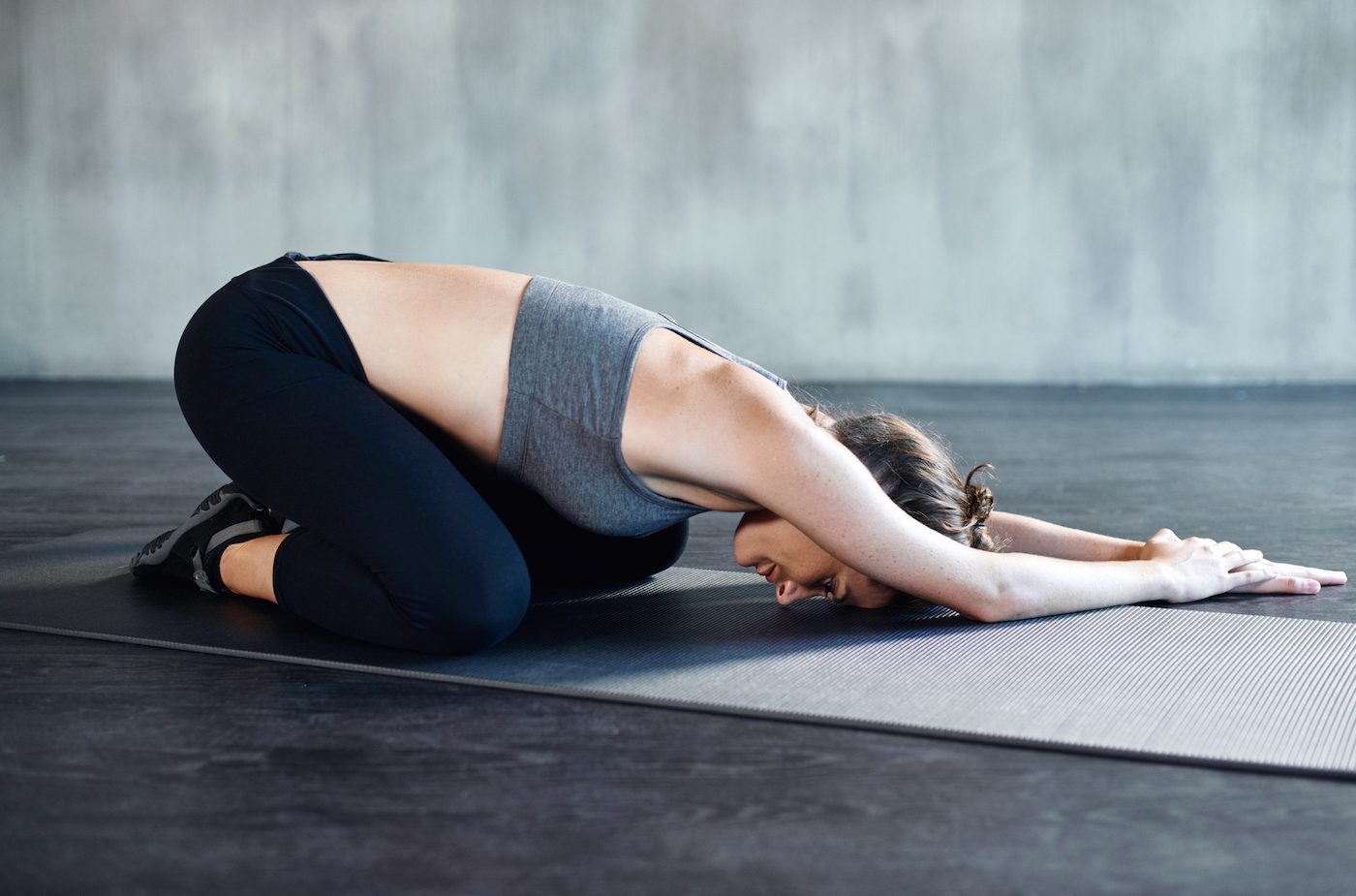
6. Injury Rehabilitation
- Rehabilitation: For athletes recovering from injuries, yoga can be a gentle yet effective way to regain strength, flexibility, and mobility while minimizing the risk of re-injury.
7. Body Awareness
- Increased Body Awareness: Yoga cultivates awareness of the body’s movements and sensations. Athletes can use this heightened awareness to fine-tune their form and technique in their respective sports.
8. Recovery and Reduced Soreness
- Faster Recovery: Yoga can improve circulation, aiding in the delivery of nutrients to muscles and removing waste products, which can accelerate recovery after intense training sessions or competitions.
- Reduced Muscle Soreness: Gentle stretches and poses can alleviate muscle soreness and stiffness, allowing athletes to bounce back more quickly.
9. Injury Rehabilitation
- Rehabilitation: For athletes recovering from injuries, yoga can be a gentle yet effective way to regain strength, flexibility, and mobility while minimizing the risk of re-injury.
10. Body Awareness
- Increased Body Awareness: Yoga cultivates awareness of the body’s movements and sensations. Athletes can use this heightened awareness to fine-tune their form and technique in their respective sports.
11. Improved Sleep
- Better Sleep: Yoga’s relaxation techniques and stress reduction can improve sleep quality, vital for an athlete’s recovery and overall performance.
12. Injury Prevention
- Injury Prevention: Enhanced flexibility, strength, and body awareness can significantly reduce the risk of injuries commonly associated with sports.
13. Enhanced Recovery
- Enhanced Recovery: Yoga’s focus on relaxation and deep breathing can facilitate faster recovery after strenuous workouts or competitions.
14. Mind-Body Connection
- Mind-Body Connection: Yoga encourages athletes to connect their mental and physical states. This awareness can improve coordination and control in their respective sports.
Incorporating yoga into an athlete’s training regimen can provide a competitive edge by improving overall physical and mental well-being, reducing the risk of injury, and enhancing performance. It’s a versatile and valuable addition to any athlete’s toolkit.
How to Incorporate Yoga into Your Routine
Now that you’re familiar with the best yoga poses for back pain relief, it’s essential to understand how to integrate yoga into your daily routine for maximum benefit seamlessly. Here’s a practical guide on how to make yoga a consistent part of your life.
1. Finding the Right Yoga Class or Instructor
Finding the right yoga class or instructor is crucial for a successful and safe practice. Here’s how to get started:
- Explore Different Styles: Yoga has various styles, from Hatha to Vinyasa to Yin. Research and try different styles to see which one resonates with you and addresses your needs.
- Ask for Recommendations: Seek friends, family, or online community recommendations. Personal referrals can lead you to experienced and reputable instructors.
- Online Resources: If attending in-person classes is challenging, consider online yoga classes. There are many high-quality platforms and YouTube channels with tutorials for all levels.
- Visit Local Studios: Visit local yoga studios or fitness centers to inquire about classes. Many offer free trial sessions, allowing you to sample their classes before committing.
- Instructor Credentials: Ensure your instructor is certified and experienced, especially if you have health concerns like back pain.
2. Developing a Consistent Practice
Consistency is the key to reaping the benefits of yoga, especially when it comes to managing back pain. Here’s how to establish a regular yoga practice:
- Set Realistic Goals: Begin with achievable goals, such as practicing yoga for 15-30 minutes a few times a week. Gradually increase the duration and frequency as you become more comfortable.
- Create a Schedule: Dedicate specific time slots for your yoga practice. Consistency is easier to achieve when you have a regular schedule.
- Start Slowly: If you’re new to yoga, start with basic poses and gradually progress to more challenging ones. It’s important to build a solid foundation.
- Use Props: Props like yoga blocks, straps, and bolsters can assist you in performing poses correctly and comfortably, especially if you have back pain.
- Track Your Progress: Maintain a journal to record your yoga sessions. Document how you feel before and after each practice, noting any improvements in back pain or overall well-being.
- Find an Accountability Partner: Practicing yoga with a friend or family member can provide motivation and accountability. You can support each other in staying consistent.
- Mindfulness and Patience: Yoga is a journey, not a destination. Be patient with yourself and practice mindfulness during each session. Pay attention to your body and its signals.
- Variety is Key: To prevent boredom and plateaus, diversify your practice. Try different poses, styles, and classes to keep your routine fresh and engaging.
- Incorporate Yoga into Daily Activities: Integrating yoga into everyday life is a powerful way to ensure consistency. Perform simple stretches or breathing exercises during breaks at work or while watching TV.
- Online Communities: Join online yoga communities or forums where you can connect with like-minded individuals, share experiences, and gain inspiration to stay committed.
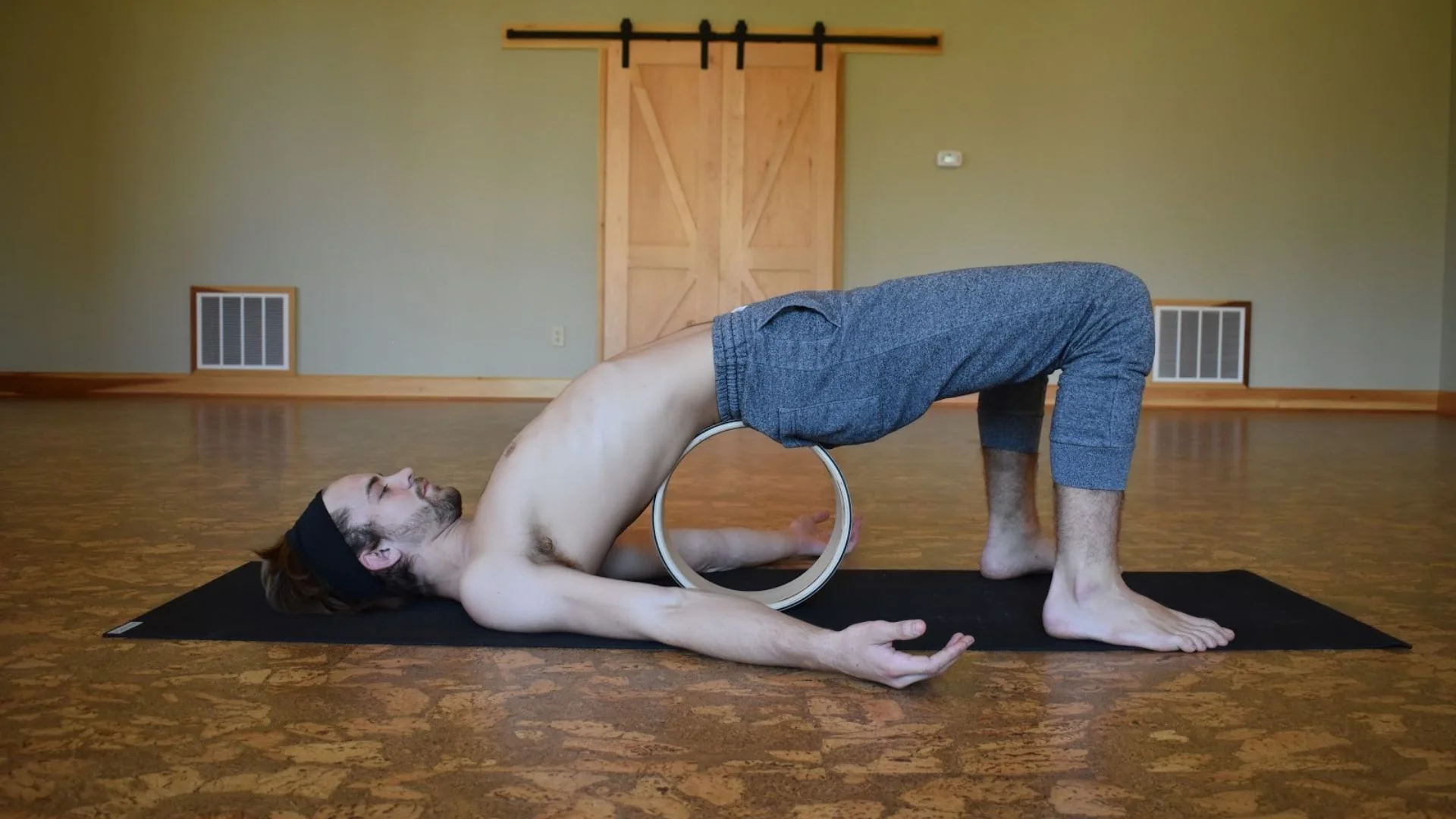
Precautions and Tips
While yoga can be a highly effective tool for managing back pain, practicing with care and attention to your body’s needs is essential. Here are some precautions and tips to ensure a safe and productive yoga experience, especially when dealing with back pain.
1. Listen to Your Body
One of the fundamental principles of yoga is listening to your body. Pay close attention to how you feel during your practice:
- Pain vs. Discomfort: It’s normal to feel some discomfort during yoga as you stretch and strengthen your muscles. However, distinguish between discomfort and pain. If you experience sharp or intense pain, stop immediately and consult a healthcare professional.
- Avoid Overexertion: Pushing yourself too hard can lead to injury. Always respect your body’s limits and avoid forcing yourself into poses that don’t feel right.
- Modifications: Don’t hesitate to modify poses to suit your needs. Use props like blocks or straps to make poses more accessible and comfortable.
2. Modify Poses as Needed
Not every yoga pose will be suitable for your condition. Here are some modifications to consider:
- Bend Your Knees: In many poses, especially forward bends, slightly bending your knees can reduce strain on your lower back.
- Use Props: Props like yoga blocks, bolsters, and straps can provide support and make poses more accessible.
- Skip Certain Poses: If a pose exacerbates your back pain or discomfort, skip it. There are plenty of alternative poses to choose from.
3. Avoid Overstretching
Overstretching can lead to injury, so it’s crucial to maintain a controlled and mindful approach to your stretches:
- Progress Slowly: If you’re working on improving your flexibility, progress incrementally rather than attempting deep stretches right away.
- Focus on Breathing: Deep, controlled breathing can help you relax into stretches without overexerting yourself.
- Warm-Up: Start your yoga practice with gentle warm-up poses to prepare your muscles for deeper stretches.
4. Consult a Healthcare Professional
If you have a history of back problems or a recent back injury, it’s advisable to consult a healthcare professional before starting or intensifying a yoga practice:
- Medical Evaluation: A healthcare provider can assess your condition, diagnose properly, and offer guidance on whether yoga suits you.
- Customized Advice: Your healthcare professional can recommend specific poses or modifications tailored to your condition, ensuring a safe and effective practice.
- Physical Therapy: In some cases, combining yoga with physical therapy can greatly benefit back pain management. Your healthcare provider can guide on this.
Remember that yoga is about your journey, and practicing safely and mindfully is more important than pushing yourself beyond your limits. With the right precautions and modifications, yoga can be a valuable tool to alleviate back pain and improve your overall well-being.
Conclusion
Incorporating yoga into your daily routine can be a game-changer when it comes to managing back pain. It offers a holistic approach that alleviates pain and improves your overall well-being. Remember to consult a healthcare professional before starting any new exercise regimen, and enjoy the healing power of yoga.
FAQs
Q: Is yoga suitable for all types of back pain?
Yoga can benefit various types of back pain, but it’s essential to consult a healthcare professional for personalized guidance.
Q: How often should I practice these yoga poses?
Consistency is key. Aim for at least a few sessions per week to experience the benefits.
Q: Can yoga completely cure back pain?
While yoga can significantly reduce back pain, it may not be a cure for severe or chronic conditions. It should be part of a holistic approach to pain management.
Q: Are there any age restrictions for practicing these poses?
Yoga poses can be adapted to suit different age groups, but starting slowly and seeking guidance is advisable, especially for older individuals.
Q: Can I do yoga if I have a recent back injury?
If you have a recent back injury, it’s crucial to consult with a healthcare professional before attempting any yoga poses to avoid exacerbating the injury.


